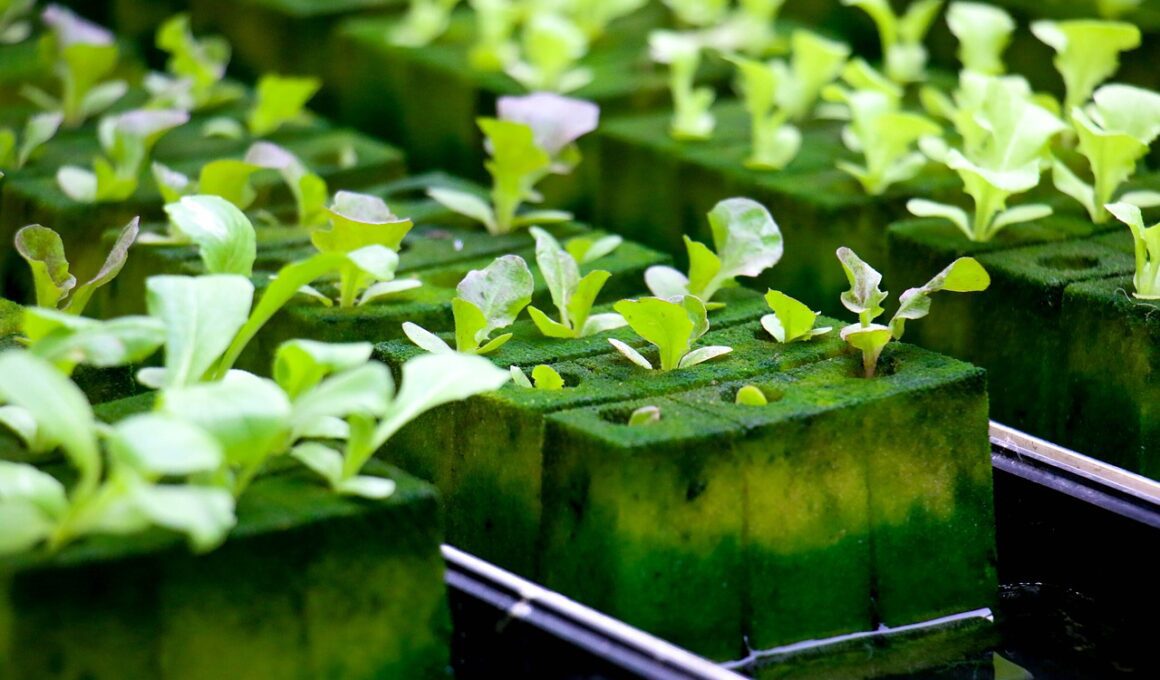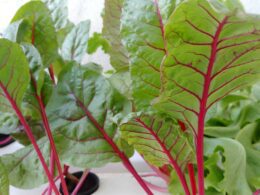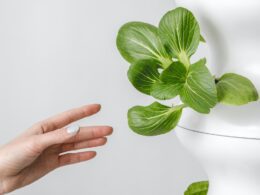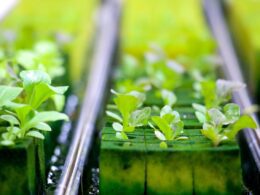Are you looking for a healthier alternative to traditional farming methods? Have you heard of hydroponic farming? Hydroponic farming is a method of growing plants without soil, using nutrient-rich water instead. But is hydroponic food healthier?
In this article, we will explore the pros and cons of hydroponic farming, as well as the nutritional quality of hydroponic food. We’ll help you understand what hydroponic farming is all about, and whether it’s a safe and healthy option for your diet.
So, if you’re curious about hydroponic food and want to know if it’s a better choice for your health, keep reading!
What is Hydroponic Farming?
Growing plants without soil may sound like science fiction, but hydroponic farming is a revolutionary technique that’s changing the way we think about agriculture. Hydroponic techniques involve growing plants in a nutrient-rich solution instead of soil.
This method uses less water, fertilizers, and pesticides than traditional farming, making it a more sustainable agriculture option. Hydroponic farming has many benefits. Since the plants get all the nutrients they need directly from the solution, they grow faster and produce more yield than soil-grown plants.
This makes hydroponic farming an excellent option for farmers who want to grow crops in a limited space. Additionally, because hydroponic farming is done indoors, the crops are less susceptible to pests and diseases. In conclusion, hydroponic farming is a sustainable agriculture method that’s gaining popularity all over the world.
It’s a technique that uses less water, fertilizers, and pesticides than traditional farming, making it an eco-friendly option. With hydroponic techniques, farmers can grow crops indoors and get higher yields in a limited space.
Pros of Hydroponic Farming
You’ll love the benefits of this innovative method, from saving water to reducing the use of pesticides and herbicides. Hydroponic farming is highly sustainable and environmentally friendly, as it requires significantly less water than traditional farming methods. The water used in hydroponic systems is recycled and reused, reducing the overall amount of water required to grow crops. This makes it a great option for areas experiencing water shortages or droughts.
In addition to being sustainable, hydroponic farming is also cost-effective. While the initial investment can be quite high, the long-term benefits far outweigh the costs. Hydroponic systems require less space and resources than traditional farming methods, which means that farmers can grow more crops in a smaller area. This leads to higher yields and more profitable harvests. Furthermore, hydroponic systems allow for year-round crop production, which means that farmers can generate income throughout the year, rather than just during the growing season.
Overall, hydroponic farming offers a range of benefits, from sustainability benefits to cost-effectiveness. By using less water and reducing the need for pesticides and herbicides, hydroponic systems are a great option for environmentally conscious farmers. Additionally, the high yields and year-round production make it a cost-effective option for those looking to increase their profits. So, if you’re looking for a way to grow crops that’s both sustainable and profitable, hydroponic farming may be the perfect solution for you!
Cons of Hydroponic Farming
When it comes to hydroponic farming, there are some drawbacks to consider. First, hydroponic systems lack the microbial diversity found in soil-based farming, which can affect plant growth and overall health.
Additionally, hydroponic farming is heavily reliant on technology for monitoring and controlling nutrient levels, temperature, and water flow. This means that any malfunction or power outage could potentially harm the plants.
Lack of Microbial Diversity
Don’t forget that your body needs a diverse range of microbes to stay healthy, and unfortunately, hydroponic systems may not provide enough variety. Microbial imbalances can lead to issues with gut health, including inflammation and disease.
When plants are grown in the soil, they are exposed to a wide range of microbes, including bacteria, fungi, and viruses. These microbes help to create a healthy ecosystem in the soil, which in turn supports the growth of healthy plants.
However, in hydroponic systems, the lack of soil means that there is a reduced diversity of microbes. This can lead to a lack of beneficial bacteria and fungi in the plants, and can also impact the microbial diversity in the human gut when consuming hydroponic produce.
This can be a concern for those who are looking to maintain optimal health and wellness. So, while hydroponic farming may have its benefits, it’s important to keep in mind the potential drawbacks when it comes to the lack of microbial diversity.
- Hydroponic systems provide a sterile environment for plants to grow, but this means that there is a lack of beneficial bacteria and fungi that would normally be found in soil.
- This can lead to a reduced diversity of microbes in the plants, which can impact the health of the human gut when consuming hydroponic produce.
- Without a healthy ecosystem of microbes, plants may be more susceptible to disease and pests, which can impact the quality and safety of the produce.
Dependence on Technology
If you rely too heavily on technology for your gardening needs, you may miss out on the satisfaction and connection that comes with nurturing plants in the traditional sense. Hydroponic farming often requires a dependence on technology, such as water pumps, grow lights, and climate control systems. While this can increase efficiency and yield, it also means that the success of the crops is heavily reliant on the proper functioning of these systems. In contrast, traditional gardening involves working with the natural environment and relying on the sun, rain, and soil to nourish the plants.
The dependence on technology in hydroponic farming also has environmental impacts. The energy consumption of the systems required for hydroponics can be significant, particularly for large-scale operations. Additionally, the materials used in hydroponic systems, such as plastic tubing and grow trays, contribute to waste and pollution. While hydroponic farming can provide fresh produce in urban areas or in areas with poor soil quality, it is important to consider the environmental impact and the potential drawbacks of relying too heavily on technology.
Is Hydroponic Food Healthier Compared to Food Grown in Soil?
Hydroponics vs soil in terms of health: The debate over which is healthier, hydroponic food or soil-grown food, is ongoing. Hydroponics eliminates the need for soil, relying on nutrient-rich water solutions. While hydroponic food can offer certain advantages, such as reduced pesticide use and faster growth, soil-grown food typically contains a wider range of beneficial microorganisms. Ultimately, both methods can produce healthy crops, but further research is needed to determine their exact nutritional differences.
Nutritional Quality of Hydroponic Food
Discover the superior nutritional benefits of growing crops with a soil-free method. Hydroponic food is grown in a controlled environment that allows for precise monitoring of the plants’ nutritional needs. The nutrient levels in hydroponic food are often higher than those in conventionally grown crops because the plants receive a balanced diet of essential minerals.
Growing conditions in hydroponic systems are optimized to provide plants with the ideal growing conditions. This means that hydroponic crops can be grown year-round, allowing for a consistent supply of fresh produce. Additionally, hydroponic systems use less water than traditional farming methods, making them more environmentally friendly.
In summary, hydroponic food provides superior nutritional benefits compared to conventionally grown crops. By growing crops in a controlled environment with optimized growing conditions, hydroponic farmers are able to produce food that is more nutritious and environmentally friendly. So next time you’re looking for a healthy and sustainable food option, consider trying hydroponic produce.
Conclusion: Is Hydroponic Food Healthier?
In conclusion, it’s worth noting that hydroponic food offers numerous benefits over traditional farming methods. First and foremost, hydroponic farming allows for more efficient water usage, reducing the overall environmental impact of food production.
Additionally, hydroponic crops are often grown without the use of harmful pesticides or other chemicals, resulting in a safer and more nutritious end product.
Furthermore, hydroponic farming allows for year-round crop production, meaning that consumers can enjoy fresh produce regardless of the season. This is particularly important for those living in areas with limited access to fresh produce, such as food deserts.
Additionally, hydroponic farming can be done in urban areas, making it an accessible and sustainable option for cities looking to increase their food security.
Overall, while there may be some debate over the nutritional quality of hydroponic food, it’s clear that hydroponic farming offers numerous benefits for both the environment and our diets. By reducing water usage, limiting the use of harmful chemicals, and increasing access to fresh produce, hydroponic farming is a promising solution for a more sustainable and equitable food system.
Frequently Asked Questions
How much does it cost to set up a hydroponic farm?
Setting up a hydroponic farm can be a cost-effective and scalable way to grow fresh produce. A cost analysis should be conducted to determine the initial investment required for equipment, supplies, and infrastructure. However, hydroponic farming can be scaled up or down depending on the available space and budget.
With the right planning and execution, a hydroponic farm can be a profitable venture in the long run. Additionally, hydroponic farming eliminates the need for pesticides, herbicides, and synthetic fertilizers, making it an environmentally friendly option.
Overall, if you’re considering starting a hydroponic farm, conducting a cost analysis and understanding the scalability potential can help you make informed decisions and set you on the path to success.
What kind of plants are best suited for hydroponic farming?
If you’re interested in hydroponic farming, it’s important to know which plants are best suited for this type of cultivation. Plants that grow well in hydroponic systems include lettuce, spinach, herbs, and strawberries.
Vertical farming benefits can also be achieved with hydroponic systems, as they require less space and can produce higher yields than traditional farming methods.
Nutrient solution composition is also crucial for successful hydroponic farming, as plants rely on a carefully balanced solution of nutrients to grow.
With the right set up and attention to detail, hydroponic farming can be a highly efficient and sustainable way to grow fresh produce.
Can hydroponic farming be done at home?
Looking to start your own hydroponic farm at home? With DIY hydroponic kits, it’s easier than ever to grow your own produce right in your own kitchen.
Not only is it a fun and educational experience, but there are also many benefits of homegrown produce. You know exactly what goes into growing your food, and you can avoid harmful chemicals and pesticides. Plus, the produce is fresher and more nutrient-dense than store-bought options.
So why not give hydroponic farming a try and enjoy the many benefits of growing your own food at home?
Are there any environmental concerns associated with hydroponic farming?
Concerns have been raised about the environmental impact of hydroponic farming. One of the main concerns is water usage. However, some argue that the water usage can be controlled and reduced by using efficient irrigation systems and recycling water.
Another concern is the use of pesticides. Since hydroponic systems are in a closed environment, pests can quickly spread and cause damage to crops. This often leads to the use of pesticides to control the pests. However, some hydroponic farms use integrated pest management techniques to reduce the use of pesticides.
It’s important for hydroponic farmers to be mindful of water usage and pesticide use to minimize any negative environmental impact.
How does the taste of hydroponic produce compare to traditionally grown produce?
When it comes to the taste of hydroponic produce compared to traditionally grown produce, there are some differences to consider.
Hydroponic produce tends to have a milder taste and a more consistent texture, while traditionally grown produce can have a stronger flavor and more variation in texture.
However, it’s important to note that nutritional value difference between the two types of produce is minimal, with some studies even showing hydroponic produce to be higher in certain nutrients.
Ultimately, taste preference is subjective and may vary depending on the individual.
Conclusion
So, is hydroponic food healthier? The answer is not a straightforward yes or no.
On one hand, hydroponic farming has many benefits such as reduced pesticide use, year-round production, and efficient use of resources.
On the other hand, there are also concerns about the potential for decreased nutrient content and the use of synthetic fertilizers.
Ultimately, the nutritional quality of hydroponic food will depend on many factors such as the specific crops grown, the nutrient solutions used, and the growing conditions.
While hydroponic food can be a healthy and sustainable option, it’s important to do your research and choose high-quality products to ensure that you’re getting the most out of your food.









